|
Paleontology |
| Massive Wall at Cal Orcko in Southern Bolivia Reveals more than 5,000 Dinosaur Footsteps Cal Orcko is a paleontological
site in Bolivia with a steep wall with thousands of dinosaur foot prints
in it. it is situated near the city of Sucre. The huge site is located
on a cliff with a slope of 73 degrees, 80 meters (260 ft) high and 1,200
meters (3,900 ft) long. Foot prints of 293 species of dinosaurs from
upper cretaceous period are currently identified. - Wikipedia
Situated near the city of Sucre, the huge Cal Orck’o archaeological site is located on a cliff just 5kms from the city center. It has a slope of 73 degrees, is 80 meters (260 ft) high and 1,200 meters (3,900 ft) long. Discovered on the grounds of the local cement company (Sucre’s Fabrica Nacional de Cemento SA/Fancesa), it´s the largest concentration of dinosaur tracks in the world. 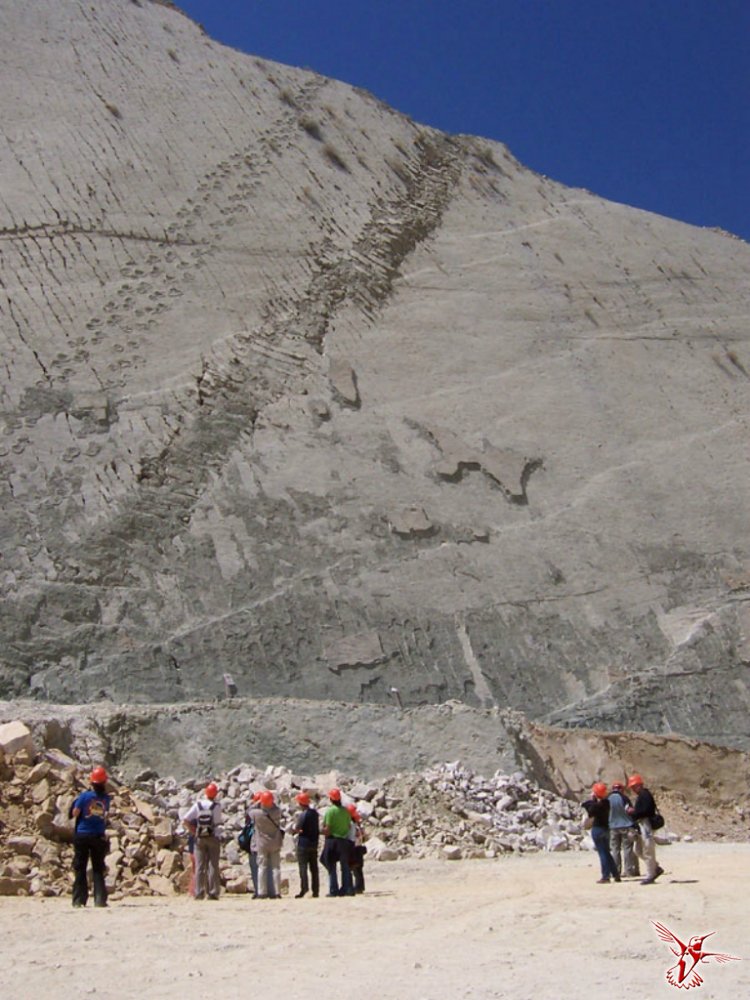 Sauropodomorpha footprints in Cal Orcko - Photo Credit The footprints were first discovered by miners in 1985, but it was only between 1994 and 1998 that the site’s importance was fully realized. In 1994, workers discovered a huge limestone wall, 1.2 km long and 80 meters high, that was absolutely covered by thousands of dinosaur footprints.The footprints remained covered until the 1990s, when Fancesa company mined away the sedimentary layers for use in the production of concrete. 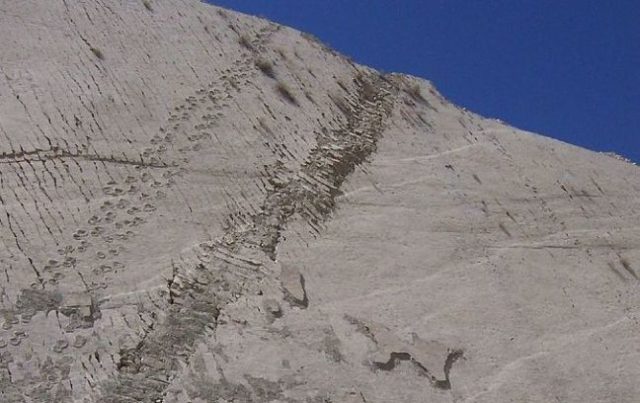 Four years later, a scientific team led by Swiss paleontologist Christian Meyer investigated the wall. According to him, the discovery marks an enormous contribution to humanity and to science, revealing data heretofore unknown and “documenting the high diversity of dinosaurs better than any other site in the world”. 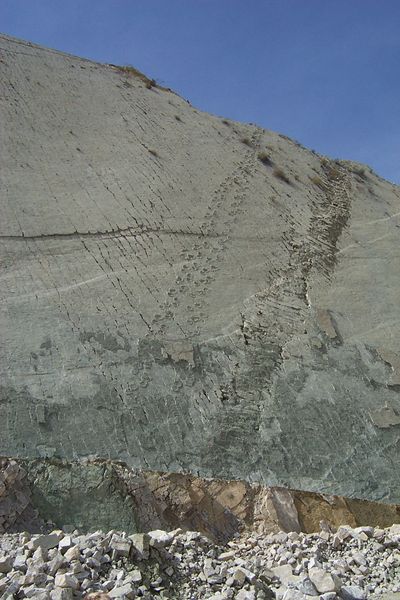
The dinosaur tracks date from 68 million years ago. Photo Credit
The dinosaur tracks of the Cal Orck’o paleontological bed date from 68 million years ago and there are more than 5,000 footprints from 293 species of dinosaurs, all made during the second half of the Cretaceous period. The location used to be the shore of a former lake, which, as an important water sauce, attracted a large number of both herbivorous and carnivorous dinosaurs. It is amazing that almost all of the prints are so well preserved that scientists can tell exactly what species they were made by. Some of the dinosaurs whose tracks have been found are the Ankylosaurus, the Titanosaur, and Carnotaurus. Perhaps, the most spectacular set of tracks is 347 meters long, the longest dinosaur trackway ever found, and was made by a baby Tyrannosaurus Rex nicknamed “Johnny Walker” by researchers. 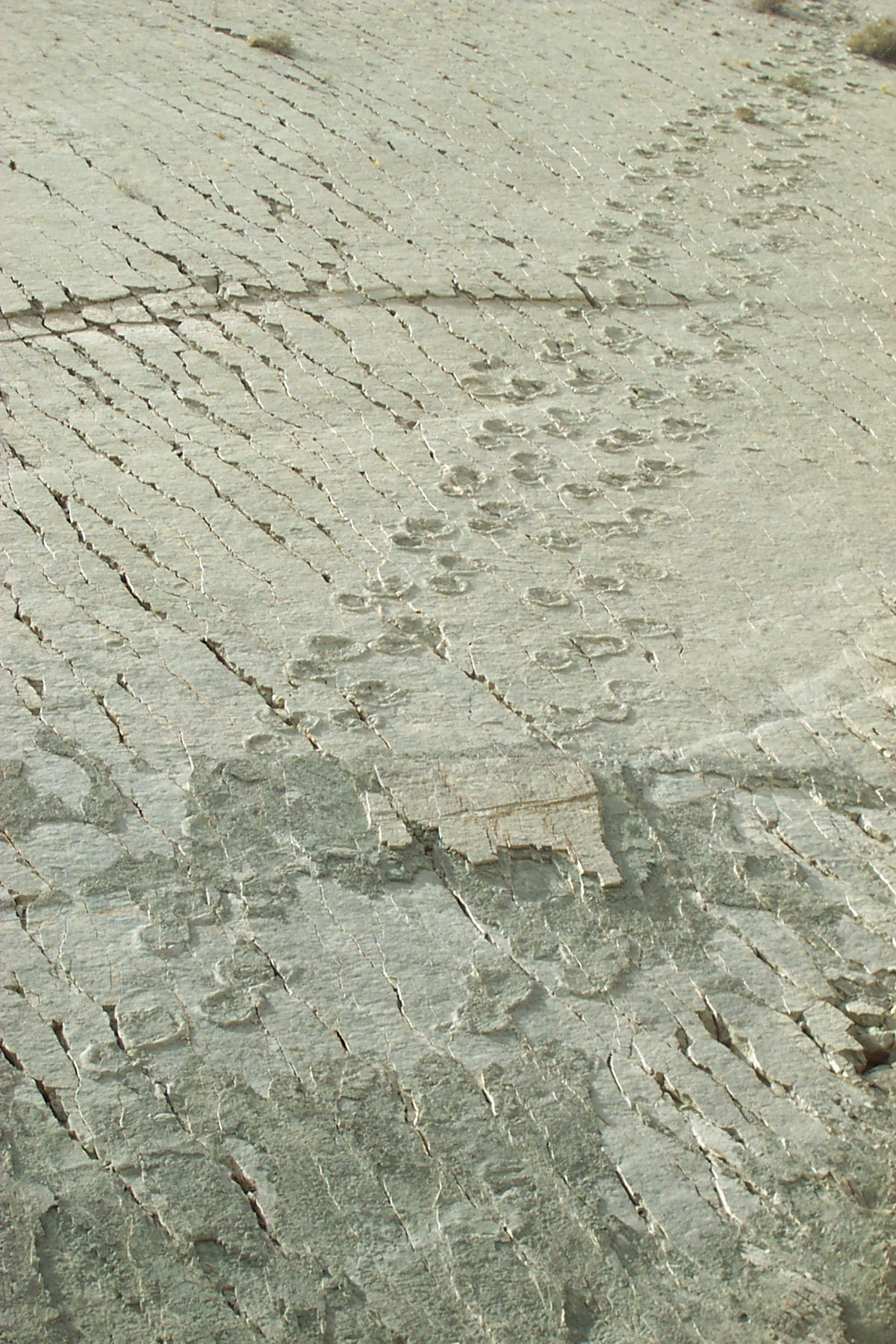 Most impressive of these is the world-record setting 347-meter trail
left by a baby
Tyrannosaurus Rex known as “Johnny Walker”. Photo Credit In 2010, a section of the wall broke off, destroying some of the tracks but revealing another layer underneath. It is believed that there are multiple layers of tracks below the currently visible top layer. SOURCE: The Vintage News |
Cal Orck'o: Footprints of Time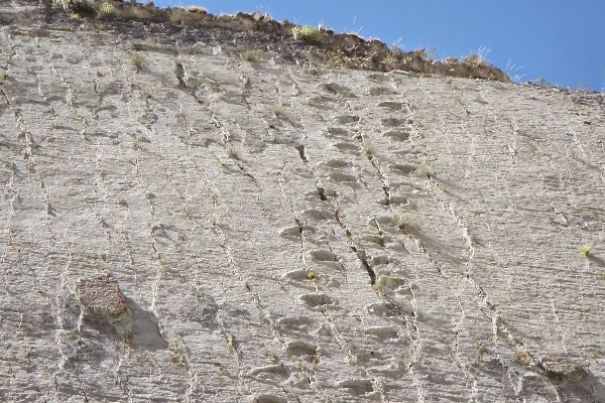 Photo Credit Description
We transcribe Klaus Schutt’s text: “A visit to the paleonthological bed surrounding Sucre takes us back in time to the dawn of life on the planet. Impressive rocks, deep canyons, sacred mountains and cheerful waterfalls of crystalline water characterize the zones in which we find fascinating Paleolithic remains: the oldest footprints on the face of the earth. [...] Approximately 68 million years ago, an enormous volcanic eruption threw millions of cubic meters of ash into space. This matter, upon falling onto the footprints, which were still fresh, covered them with a thick layer that protected them from eolic and pluvial erosion, that would have otherwise erased them in a matter of hours. Later, subsequent ash deposits and sedimentary material carried by the rivers that flowed into the lake began creating additional sedimentary layers that turned into rock due to the pressure that was exerted on them through millions of years.” The dinosaur tracks of the Cal Orck’o paleonthological bed date from 68 million years ago and belong to the upper cretaceous period, a time in which the majority of dinosaurs lived; soon before their extinction from the face of the earth, which was registered around 65 million years ago. SOURCE: Cal Orck'o: Footprints of time - UNESCO World Heritage Site 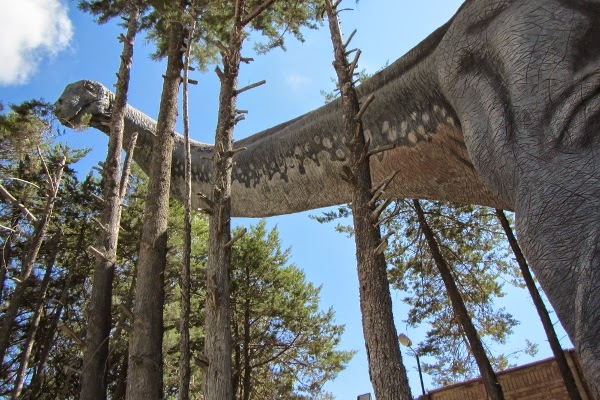 Photo Credit |
Related Links:
|
| FAIR USE NOTICE: This page contains copyrighted material the use of which has not been specifically authorized by the copyright owner. Pegasus Research Consortium distributes this material without profit to those who have expressed a prior interest in receiving the included information for research and educational purposes. We believe this constitutes a fair use of any such copyrighted material as provided for in 17 U.S.C § 107. If you wish to use copyrighted material from this site for purposes of your own that go beyond fair use, you must obtain permission from the copyright owner. |
|
|
